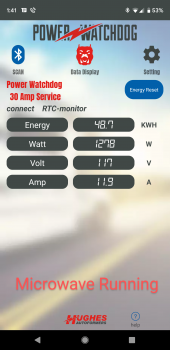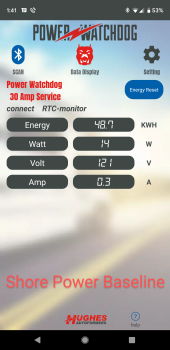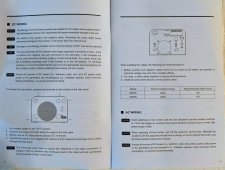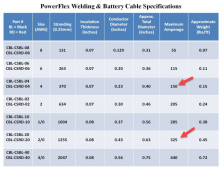richardtc17
New Member
- Joined
- May 9, 2020
- Messages
- 15
Hello,
Since Will is so honest in his communication in his product testing, am thinking it is alright to share my experience with Renogy Solar following my purchase of a 2000W inverter charger. My apologies in advance if this posting is not in line with the mission of this forum.
I could use some assistance in figuring out why my Renogy Solar 2000W Inverter Charger (IC) is shutting down when running my 900 watt microwave in my travel trailer. I have gone as far as returning the IC to Renogy for testing. After waiting far too long for them to get to it they say the IC is functioning as intended.
My questions:
Sincerely,
Richard C.
Since Will is so honest in his communication in his product testing, am thinking it is alright to share my experience with Renogy Solar following my purchase of a 2000W inverter charger. My apologies in advance if this posting is not in line with the mission of this forum.
I could use some assistance in figuring out why my Renogy Solar 2000W Inverter Charger (IC) is shutting down when running my 900 watt microwave in my travel trailer. I have gone as far as returning the IC to Renogy for testing. After waiting far too long for them to get to it they say the IC is functioning as intended.
My questions:
- Is there anything in my setup that could be causing the IC to be shutting down while "functioning as intended" in a Renogy bench test?
- Is there a better way to work with Renogy? They still have the IC and appear not to be able to send it back to me or do the right thing and give me a refund, even just based on how much hassle this has been for the past 5-plus months.
- Soon after delivery the IC was installed by a professional RV solar electrician (along with a Chins 200ah LiFePO4 battery).
Image - Final Installation - Upon testing we were never able to prevent the IC from shutting when powering a 900W microwave. Our battery monitor shows the IC shutting down between 1200 and 1600 watts. In comparison, when I run the microwave on shore-power and measure through our surge protector it registers 1275 Watts at 12 Amps.
Image - Shore power baseline - microwave off
Image - Microwave on - Bench testing results from Renogy:
- "Here are the testing process that was made.
- Battery bank is sized at 12V 300AH Lithium.
- Unit is outputting about 1840W without issue. This is 92% of rated capacity.
- Input VAC = 116.4 V
- Customer incorrectly measured this as 0.0V due to their multimeter being set to VDC.
- Output VAC = 115.8 V
- Unit is working as intended in this configuration.
- In this case, as part of the policy, if after testing the item being returned is not deemed defective, the buyer is responsible to pay the return shipping cost. We do not offer expedited shipping under any circumstances."
- "Here are the testing process that was made.
- After not contacting me about setting up the return of the IC I sent them an email in early August. Since then, they have promised me on Saturday, August 7, to contact me the following Monday (August 9) by email. After I did not get the promised Monday communication, I waited a few days I wrote them back expressing my frustration. I then got an email promise on a Thursday (August 19) that they would be calling me back on the next day, Friday, August 20. Once again, no promised follow-up in the form of a returned phone call.
Sincerely,
Richard C.
Attachments
Last edited:









